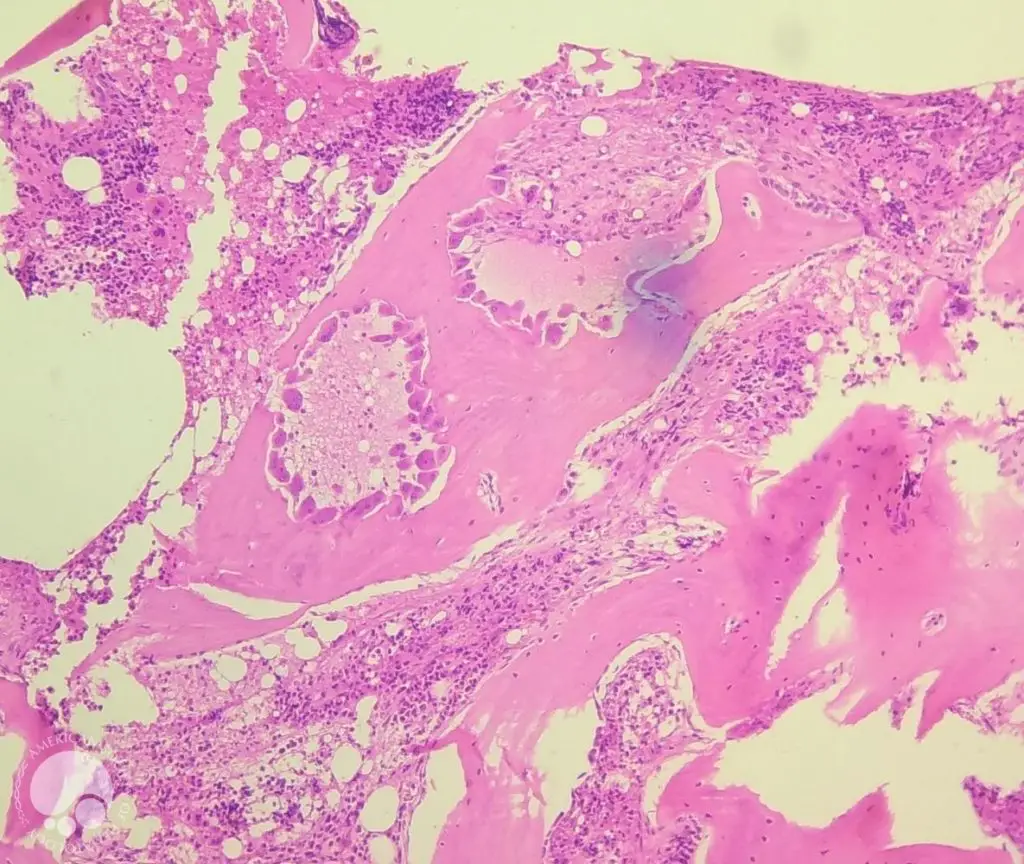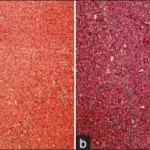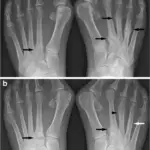Renal osteodystrophy is a broad term that incorporates all the biochemical abnormalities and skeletal manifestations in patients suffering from chronic kidney disease or end-stage renal disease.
What is the Pathology of Renal Osteodystrophy?
The pathology of renal osteodystrophy is:
-Etiology: The cause of renal osteodystrophy in chronic kidney disease and secondary hyperparathyroidism.
-Genes involved: PTHR1.
-Pathogenesis: The sequence of events that lead to renal osteodystrophy result from hyperparathyroidism secondary to hyperphosphatemia combined with hypocalcemia, both of which are due to decreased excretion of phosphate by the damaged kidney.
-Histology: The histology associated with renal osteodystrophy shows high bone turnover and low bone turnover states.
How does Renal Osteodystrophy Present?
Patients with renal osteodystrophy typically affect males and females present at the age range of 40 and above. The symptoms, features, and clinical findings associated with renal osteodystrophy include bone pain, joint pain, bone deformation, and bone fracture.
How is Renal Osteodystrophy Diagnosed?
Renal Osteodystrophy is diagnosed by bone biopsy.
How is Renal Osteodystrophy Treated?
Renal Osteodystrophy is treated with phosphate binders, vitamin D compounds, and calcimimetics.
What is the Prognosis of Renal Osteodystrophy?
The prognosis of renal osteodystrophy is generally good after kidney transplantation.



